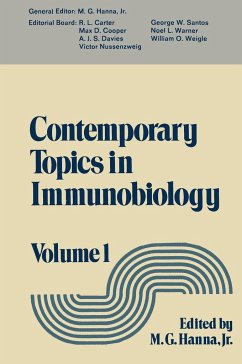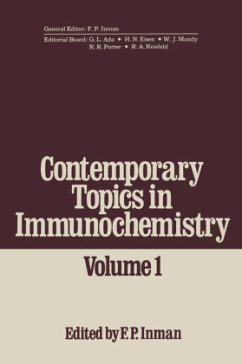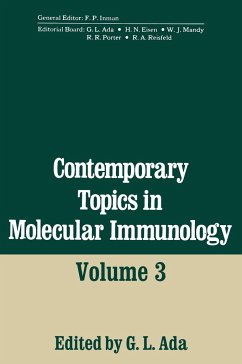
Contemporary Topics in Molecular Immunology

PAYBACK Punkte
20 °P sammeln!
The distinction between molecular immunology and immunobiology is neces sarily arbitrary. The most rapid progress is usually made in the blurred area between the two, when the chemist is aware of the full significance of the biological problems, and the biologist is alert to the contribution that a knowl edge of molecular structure can be made to their solution. The range of scientific disciplines able to contribute to research in immunology, which this approach brings, is reflected in the present volume. Protein chemists worked out the arrangement of the polypeptide chains and the amino acid ...
The distinction between molecular immunology and immunobiology is neces sarily arbitrary. The most rapid progress is usually made in the blurred area between the two, when the chemist is aware of the full significance of the biological problems, and the biologist is alert to the contribution that a knowl edge of molecular structure can be made to their solution. The range of scientific disciplines able to contribute to research in immunology, which this approach brings, is reflected in the present volume. Protein chemists worked out the arrangement of the polypeptide chains and the amino acid sequences of antibodies and X-ray crystallographers the three dimensional structure, but more precise definition of the amino acid side chain positions in the combining site is required for an understanding of the subtleties of antibody specificity. That this can be achieved with physical techniques such as nuclear magnetic resonance has been shown by R. A. Dwek, and in his chapter he summarizes these results with a minimum of technical detail. The immune response has been shown to be dependent on complex cellular interactions and further progress will be facilitated by investigation of the molecular basis of these interactions. This necessitates study of the structure and organization of the molecules in the surfaces of lymphocytes and other cells.














